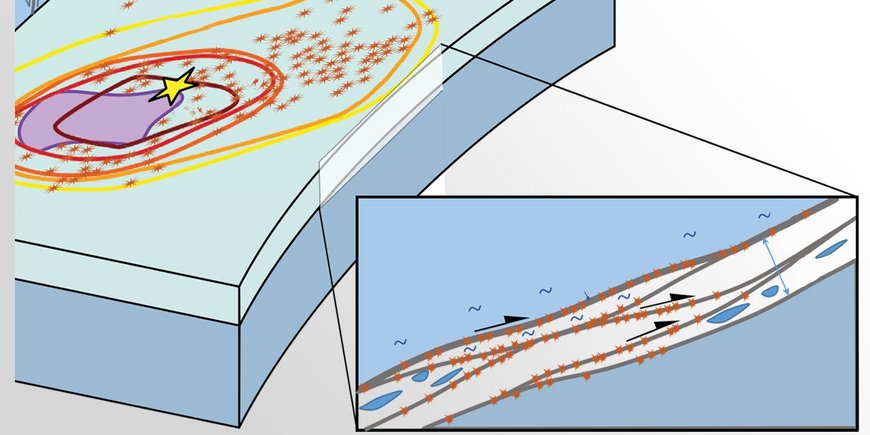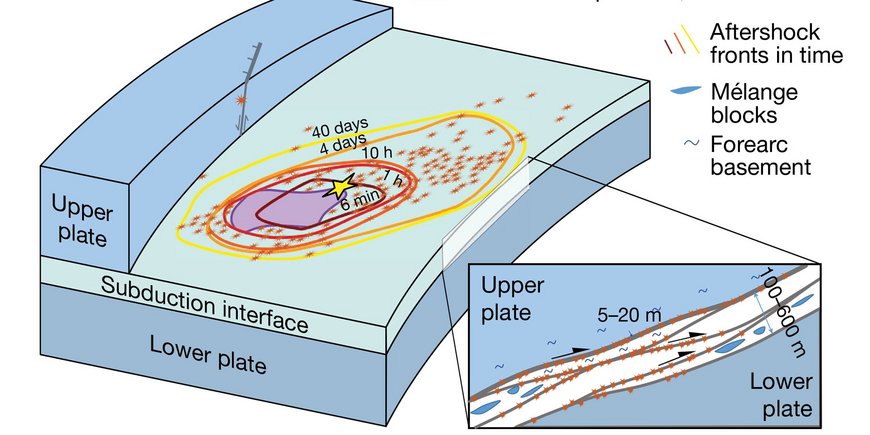The idea that earthquakes release stress by a single strong quake along a single fault plane may need to be corrected.A recent study by researchers from the Karlsruhe Institute of Technology (KIT) with the participation of the GFZ German Research Centre for Geosciences and international partner institutions points out that it would be more accurate to speak of a zone with numerous fault planes, some of which are parallel.According to the authors, the results of the study can help to create more realistic models for earthquakes and earthquake hazards in subduction zones.The study has been published in the current issue of the journal Nature.
The international team led by first author Caroline Chalumeau from KIT investigated a series of earthquakes in Ecuador on the west coast of South America. There, the Pacific Plate is subducted beneath the continental South American Plate. Subduction repeatedly leads to very severe earthquakes. The most recent series of earthquakes in Taiwan, the main quake of which killed nine people and caused extensive damage on Taiwan’s east coast at the beginning of April, can also be attributed to subduction.
The series of earthquakes in Ecuador analyzed by the team began on 12 March 2022 and ended on 26 May 2022. The most severe quake (magnitude 5.8) occurred on March 27 and triggered many smaller aftershocks over a short period of time. A dense network of 100 seismometers was located in the region at this time. It had been set up for the offshore experiment "High-resolution imaging of the subduction fault in the Pedernales Earthquake Rupture zone" (HIPER for short).
With the extraordinarily detailed data from the HIPER experiment and using artificial intelligence, the researchers were able to map more than 1,500 earthquakes and their respective fault planes at a depth of 15 to 20 kilometers in very high resolution. "We observed that the seismicity of earthquakes occurred in a primary region - the main earthquake, so to speak - and in a secondary region, i.e. the aftershocks," says first author Dr. Caroline Chalumeau from the Geophysical Institute (GPI) at KIT. "Within the primary region, we observed that the seismicity occurred on several different fault planes, often on top of each other. In some places, parallel seismically active planes occurred, in other places only single ones."
The parallelism of the quakes was not linked to a specific depth. "We have found indications that the previous idea that the stress is released by a single strong quake along a single fault plane could be a thing of the past," says Professor Andreas Rietbrock from the GPI. "Instead, we should rather speak of a fault network in which a series of ruptures discharges within a single earthquake."
The analysis of the Ecuadorian quake series also provides new insights into aftershocks. These first occurred near the epicenter of the main quake and then gradually spread in other directions, says Chalumeau. She concludes from this that the propagation of aftershocks in the region is mainly controlled by afterslip. Prof. Onno Oncken from the GFZ says: "With this work, Caroline Chalumeau's team has presented the first sharp seismological image of a seismogenic plate boundary. On the one hand, it confirms existing geological observations and, on the other hand, successfully explains the propagation of aftershocks with a new approach. Previous assumptions that, for example, fluid diffusion causes aftershocks have thus been refuted."
The results are also important for assessing the earthquake risk in subduction zones. "The study will influence the future modeling of earthquakes, but also of aseismic slips, i.e. plate movements without earthquakes," says Andreas Rietbrock.
Original publication
Dr. Caroline Chalumeau, Dr. Hans Argurto-Detzel, Prof. Andreas Rietbrock, Dr. Michael Frietsch.Prof. Onno Oncken, Dr. Monica Segovia, Dr. Audrey Galve: Seismological evidence for a multifault network at the subduction interface.Nature, 2024. DOI: 10.1038/s41586-024-07245-y




